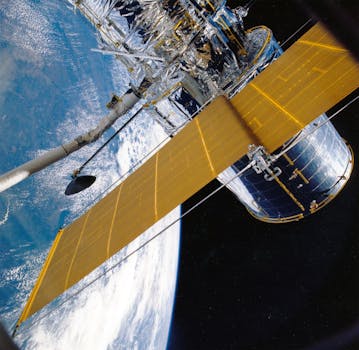
MEO Satellites: Unlocking the Power of Global Connectivity
Medium Earth Orbit (MEO) satellites are a type of satellite that operates in an orbit between 2,000 and 36,000 kilometers above the Earth’s surface. MEO satellites have gained significant attention in recent years due to their unique capabilities and applications in the telecommunications industry. In this article, we will delve into the world of MEO satellites, exploring their history, benefits, and future prospects.
The use of MEO satellites dates back to the 1960s, when they were first used for navigation and communication purposes. However, it wasn’t until the 1990s that MEO satellites began to gain popularity, with the launch of the first commercial MEO satellite constellation, known as the Iridium constellation. Since then, MEO satellites have become an essential part of the telecommunications industry, providing a range of services including voice and data communication, navigation, and remote sensing.
Benefits of MEO Satellites
MEO satellites offer several benefits over other types of satellites, including Geostationary Orbit (GEO) satellites and Low Earth Orbit (LEO) satellites. One of the primary advantages of MEO satellites is their ability to provide global coverage with a smaller number of satellites. This is because MEO satellites have a larger footprint than LEO satellites, allowing them to cover a wider area with fewer satellites. Additionally, MEO satellites have a lower latency than GEO satellites, making them ideal for real-time communication applications.
Another significant benefit of MEO satellites is their ability to provide high-speed data communication. MEO satellites can offer data speeds of up to 10 Gbps, making them ideal for applications such as video conferencing, online gaming, and cloud computing. Furthermore, MEO satellites can provide a range of services, including voice and data communication, navigation, and remote sensing, making them a versatile and valuable asset for the telecommunications industry.
Applications of MEO Satellites
MEO satellites have a wide range of applications, including navigation, communication, and remote sensing. One of the most significant applications of MEO satellites is in the field of navigation. MEO satellites are used in navigation systems such as GPS, GLONASS, and Galileo, providing location information and timing signals to users around the world. Additionally, MEO satellites are used in communication systems, providing voice and data communication services to remote and underserved areas.
MEO satellites are also used in remote sensing applications, such as weather forecasting, environmental monitoring, and disaster management. MEO satellites can provide high-resolution images of the Earth’s surface, allowing scientists to monitor climate change, track natural disasters, and predict weather patterns. Furthermore, MEO satellites can be used in a range of other applications, including search and rescue, maritime surveillance, and agricultural monitoring.
Future Prospects of MEO Satellites
The future of MEO satellites looks bright, with several new constellations and technologies being developed. One of the most significant trends in the MEO satellite industry is the development of mega-constellations, which involve the launch of hundreds or thousands of small satellites into MEO. These constellations are designed to provide global coverage and high-speed data communication, and are being developed by companies such as OneWeb, Amazon, and SpaceX.
Another significant trend in the MEO satellite industry is the development of new technologies, such as advanced propulsion systems and satellite-based internet of things (IoT) services. These technologies are designed to improve the efficiency and effectiveness of MEO satellites, and to enable new applications and services. Furthermore, the increasing demand for global connectivity and the growing need for remote sensing and navigation services are driving the growth of the MEO satellite industry, and are expected to continue to do so in the future.






